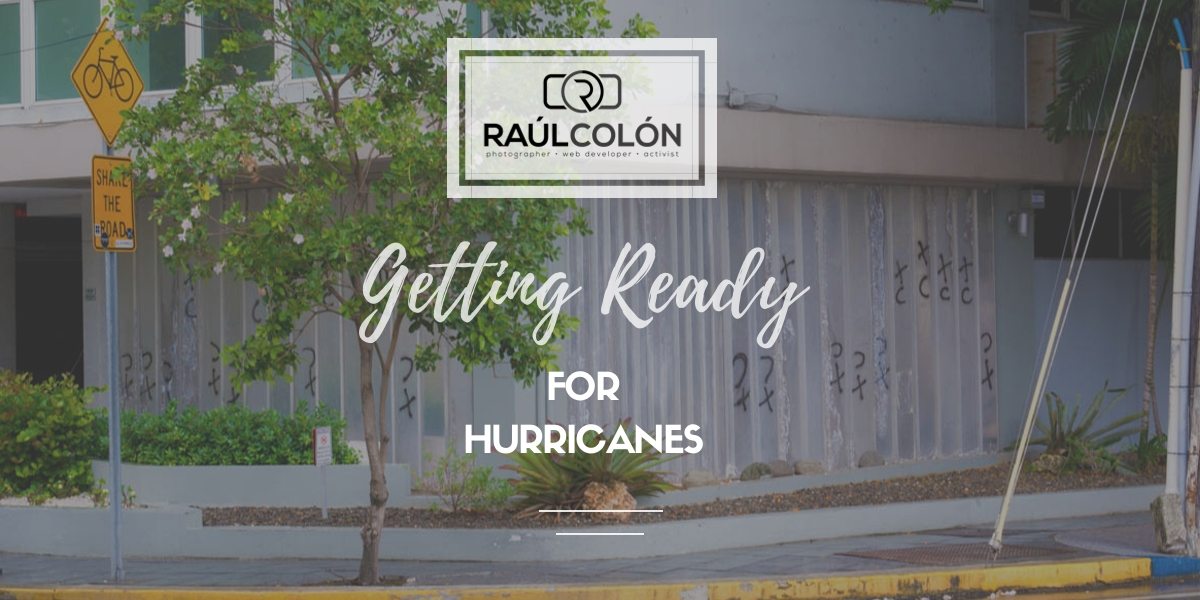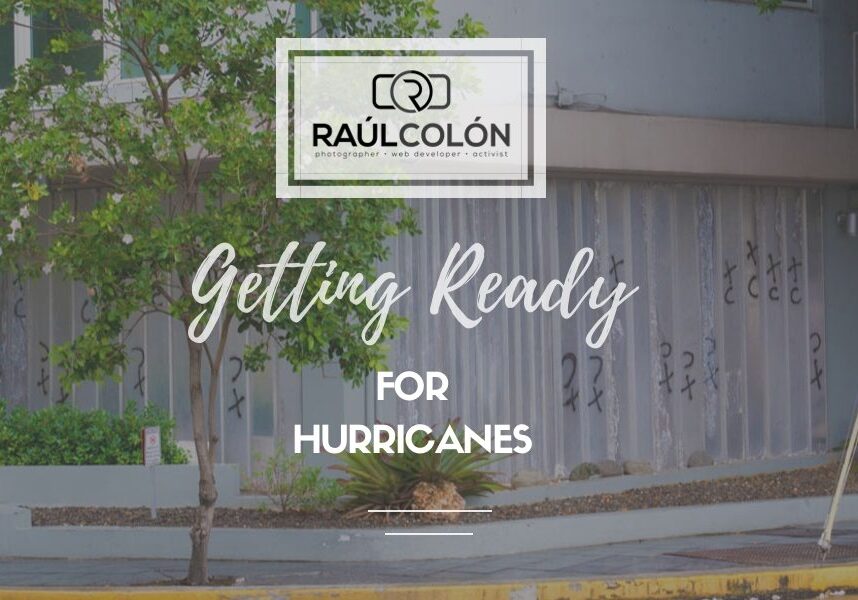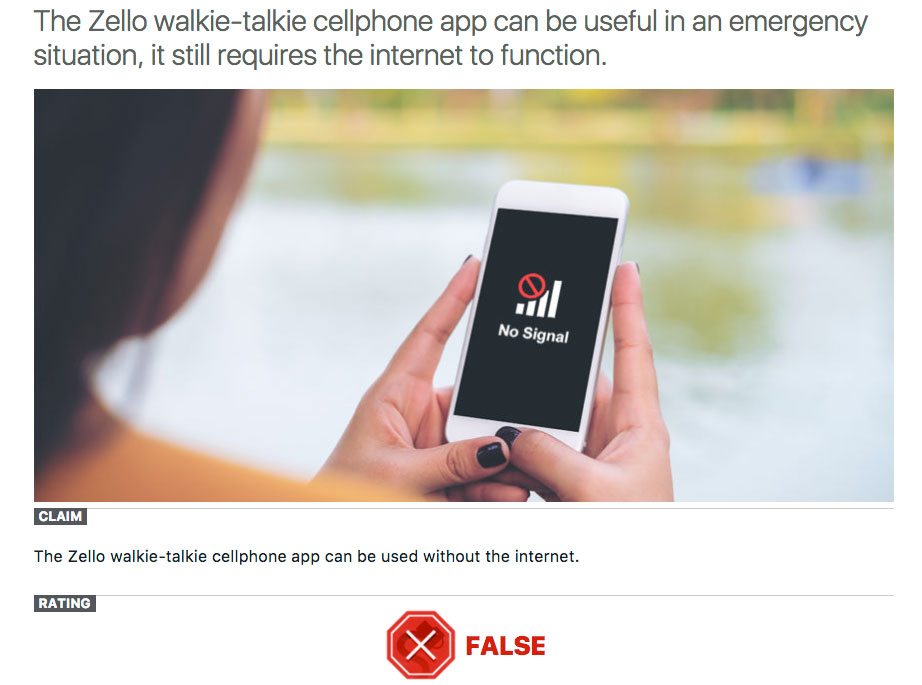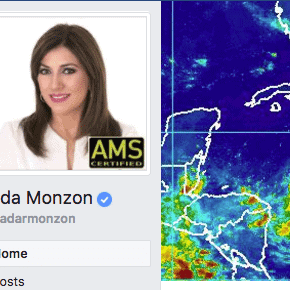Getting Ready for Hurricanes
We're getting ready for Hurricane Maria, just two weeks after Hurricane Irma brushed Puerto Rico. It can be stressful for many like me on the Island.
Hurricane Irma’s Aftermath
Puerto Rico’s frail electrical infrastructure was brought down. Based on estimates from Puerto Rico’s current Governor Ricardo Rossello, about 1 out of 20 households on the AEE infrastructure are without service.
The neighboring British Virgin Islands and U.S. Virgin Islands were hit even harder making many of these islands uninhabitable. Some of these islands lost necessities like having their water Desalinization Plants, which run on power to get fresh water to residents, obliterated. So no Power Plant means no way of producing clean water. Hurricane Irma put the destroyed the Desalination Plant out of commission.
Seeing some of the pictures of the devastation on St. John, Jost Van Dyke, and other islands make me feel grateful that what Puerto Rico lost were its power and many trees.
However, there were families in the Northeast part of Puerto Rico that lost their homes and are currently homeless as a consequence of Irma’s path.
Getting Ready for Hurricane Maria & Other Future Storms
Hurricane Maria is following Irma's path and getting stronger, so it leaves us Islanders in the position to start getting ready for the next storm. Most of the major news outlets predict it will be a major storm and as I write this today ( September 18, 2017 at 8:48 AM ) the Hurricane Maria already has maximum sustained winds of 110mph.
So as a parent it’s a bit stressful to get ready for a Category 4 Hurricane when it’s being predicted to go through the middle of Puerto Rico. But the best I can do is use my many years in scouting and in the military to prepare for such an event.
-
Recommended Items to Have During a Hurricane.
-
Apps that will help you track a Hurricane on your Smartphone
-
How to Stay Updated before, during, and after the Hurricane
-
Track a Storm or Hurricane Manually
-
What do you need during a Hurricane?
-
What not to do in a Hurricane?
-
What to do during a Hurricane?
-
There are Many ways to prepare for a Hurricane
-
Last-Minute Planning: Support Local Business
-
Turn On or Shut Off Emergency Alerts on Your Phone
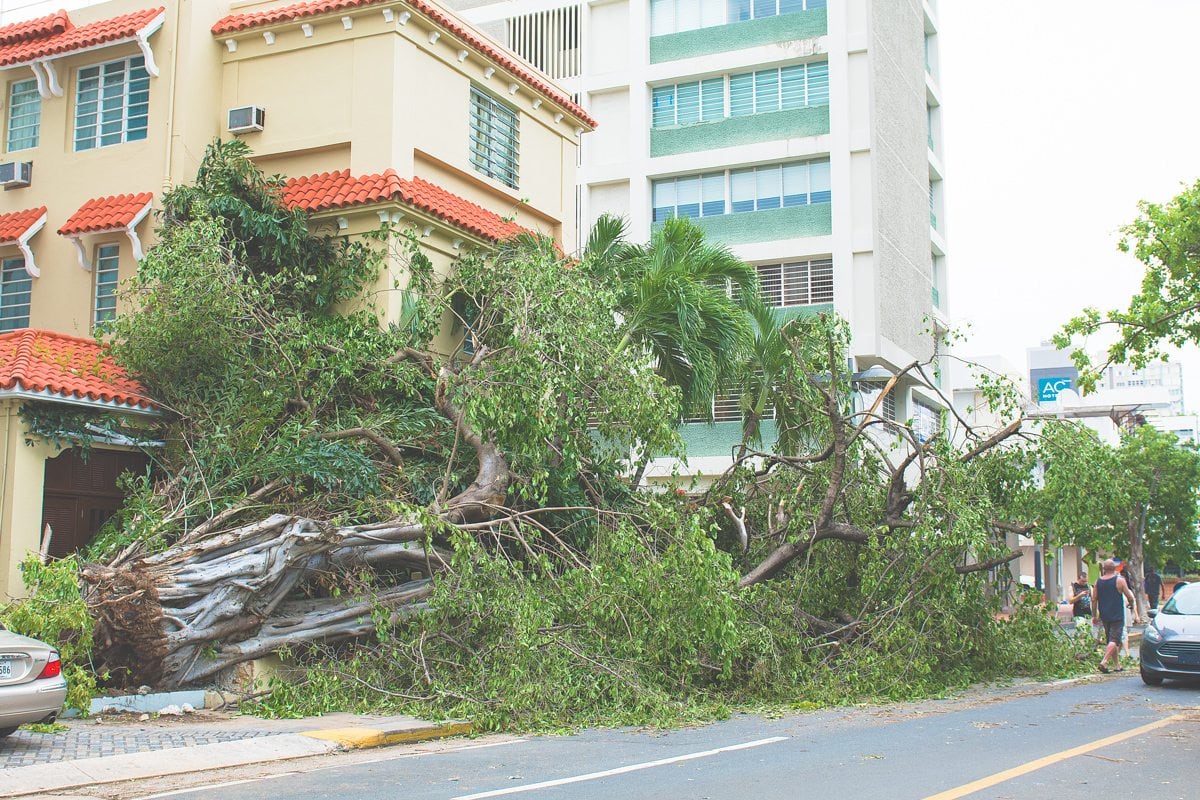
How to Stay Updated before, during, and after the Hurricane
In the old days, Radio was the way people were kept up-to-date. Then came TV but even in the late 1990’s, I remember seeing paper maps being printed out so folks could follow the hurricane and mark its path on paper with a pen or pencil.
My grandfather who passed away last year would be able to make his predictions based on the hurricane’s positioning and tracking it days before. He was as accurate as the current methods being used today. He lived through many storms and hurricanes and also knew how to read the signals from mother nature.
Track a Storm or Hurricane Manually - Hurricane Tracking Worksheet
If you want a technology that does not fail, you ought to download this Atlantic Basin Hurricane Tracking Chart also a good exercise to teach the newer generations how to track a hurricane in case the current infrastructure tied to electricity and telecommunications fails.
I wrote this post originally before Hurricane Maria, when all communications including Radio Failed. Thanks to having a way to track it and via SMS texts with my close friend Chris Brogan and my brother Javier I was able to confirm Hurricane Maria had exited Puerto Rico.
Download the Chart
Apps that will help you track a Hurricane on your Smartphone
There are many apps that can help you track a Hurricane here is a list for those who want to track storms on your smartphone.
Peace of Mind - Turn On or Shut Off Emergency Alerts on Your Phone
During the Earthquakes (which continued happening during the pandemic) and post-Hurricane Irma and Hurricane Maria I noticed that alerts would create more anxiety than help people.
It did not help to get a notification that the earth was shaking seconds after you felt the actual Earthquake.
As a volunteer during the Earthquakes, I would recommend for people shut off unnecessary alerts.
In a household where multiple phones exist maybe during the event, one phone should be left with the alerts on. But if you realize that the alerts are creating more anxiety than useful information shut them off and pay attention via other outlets. You can also assign someone in the family who does not stress out as much to be the one paying attention to any changes or alerts.
How to Turn Off Emergency Alerts on iPhone
- Open the Settings app.
- Scroll down and tap on Notifications.
- Scroll to the bottom of the screen, where you'll see the heading Government Alerts.
- Toggle off AMBER Alerts and Public Safety Alerts.
- Tap Emergency Alerts.
- Toggle Emergency Alerts off.
How to Turn ON Emergency Alerts on iPhone
- Open the Settings app.
- Scroll down and tap on Notifications.
- Scroll to the bottom of the screen, where you'll see the heading Government Alerts.
- Toggle on AMBER Alerts and Public Safety Alerts.
- Tap Emergency Alerts.
- Toggle Emergency Alerts on.
Does the Zello Phone App Work Without the Internet?
During Hurricane Irma, I saw many so-called journalists and other individuals sharing the app called Zello as a tool to communicate if you had no internet and cell towers stopped operating.
Those statements did not make much sense to me, so I quickly went into snopes.com and confirmed the following:
- The Zello walkie-talkie cellphone app can be useful in an emergency situation, it still requires the internet to function.
- Many viral statements made vague claims about how Zello could still function without cell towers. Those statements are not true.
- Although Zello can be invaluable during an emergency situation, it still requires either wireless internet or cellular data to function.
I saw many local technology experts sharing the message without even taking into consideration how they are putting people’s lives at risk by counting on a way to communicate for an emergency which would not work. So I ask before you share something that can put someone’s life at risk, please take your time to confirm if the information is true.
My recommendation is to use the internet, your data on your phone, and phone calls during a storm only if you need too. Communicate with family members before the storm let them know how you are doing.
Once the storm passes, let them know via text that you are ok. SMS (regular text message) is probably the best way to send messages out without using too much of the infrastructure’s resources.
Follow Ada Monzon
Puerto Rico's most modern and reliable Meteorologist.
As Facebook Live makes it easier for everyone to quickly talk to their audience, Ada Monzon who already had a solid following online, became the number 1 Subject Matter Expert on tracking hurricanes. If you want the most updated information, you should stop everything and make sure you follow her on every social media platform.
Follow Ada on the following Platforms:
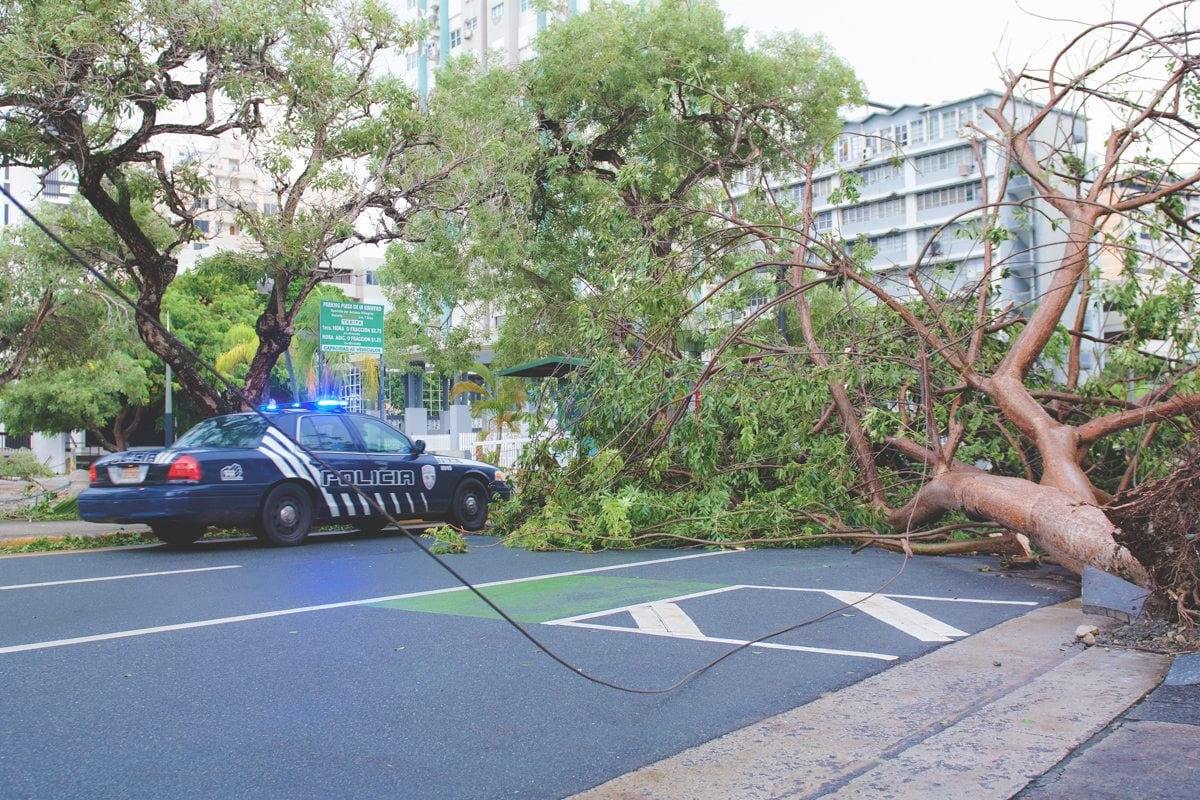
What do you need during a Hurricane?
I built a 72 Hour bag which I update a few times a year to make sure that everything in that bag is what we need. If you’re a parent like me, I recommend you go into the bag and check if clothing still fits the child.
We all know that in the case of a major emergency by grabbing the 72-hour bag, we have basic needs for the first three days.
Other than my 72-hour bag I also keep a plastic bin with essentials I would need during a power outage or natural disaster including:
- A few 7 Gallon Water Jugs and other Emergency water Storage containers.
- Portable Foldable Solar Panel to power up my extra USB external batteries, cellphone, and a few other USB devices.
- Battery Powered Fan
- Fireproof Document Bags
- LED Camping Lanterns
- Waterproof Solar Power Bank / Backup Battery Charger
- Extra batteries
- Green Glow Sticks
- Tactical Backpack I personally use GoRuck and have a set of different bags to carry from my Protest equipment to my Bug-Out-Bag.
- No Shower Bathing Wipes
- Portable Butane Gas Stove with Carrying Case
- Butane for the Stove
- 550 Paracord Lanyard Parachute Cord
- Utility Duct Tape
- Pocket Knife
- Crowbar
- LifeStraw Personal Water Filter or the LifeStraw Family 1.0 Water Purifier
There are many items you can add to this list depending on your needs.
Since we live in an apartment, we only keep what is super essential. Keeping all these items around at every moment keeps us from having to run around in retail chaos when a Storm or Hurricane watch has been issued.
I also try to keep my gas tank in my car at least 50% full. I focus on it more when hurricane season starts.
Last-Minute Hurricane Planning:
Support Local Business for Peace of Mind and Saving Time
It would be ideal to order these items ahead of time. But if you need them at the last moment, instead of heading to a large retail store, try your local small business. They might have what you need without having to stand in line for hours. While preparing for Irma, I stopped by my client San Rafael to get some essential items I could not find elsewhere.
What not to do in a Hurricane?
I remember as a kid listening to one of my teachers telling me that I needed to open at least one window during a hurricane.
After seeing a post from my friend and client Camille Fontanez I thought it was important to clarify this myth.
Q: You should leave a window open slightly during a hurricane to equalize pressure.
A: No
What to do during a Hurricane?
I saw an interesting post from the very popular account on Instagram @WhateverPuertoRico.
https://www.instagram.com/p/BZOW1qKn2TD/?taken-by=whateverpuertorico
Since the message is in Spanish, I will translate it here.
What to do during a hurricane?
- Stay Calm
- Stay up to date with the weather reports.
- Follow the instructions of the authorities.
- Place your documents and valuables in a safe place.
- Disconnect all electronic devices.
- Protect your equipment in a safe places.
- Wait out the storm in a safe zone.
- Stay Informed.
- Prepare an emergency plan for the family.
- Make sure to get your information from reliable sources.
The @WhateverPuertoRico account also has a post mentioning you don’t have to be alarmed you just have to prepare yourself.
https://www.instagram.com/p/BZOW1qKn2TD/?taken-by=whateverpuertorico
https://www.instagram.com/p/BZOrO9MHu5E/?taken-by=whateverpuertorico
There are Many ways to prepare for a Hurricane
Everyone should prepare for a hurricane focused on their needs. Taking into consideration many factors like:
- Family size
- Age of Family Members
- Areas that you live in? Are you in a flood zone, near the ocean, near trees, near hospitals?
- Dietary Needs. If you are vegan like me you can just walk into any fast food and have a meal if there is a power outage.
- Health issues. If you need electricity to run essential life-saving devices then you might want to reach out and get to a place that has a backup generator.
- If you are a breastfeeding mom, you might want to have a place to store backup breastmilk. During Hurricane Irma, some pharmacies and other business owners with backup generators were offering to store your breast milk bank.
How do you prepare for a Hurricane? What can you share?
Preparing for a Hurricane - Recommended Items List
I do receive a small commission if you click on the following links and others throughout this blog post and this site. I use the earnings to continue creating content and my activism.
